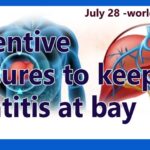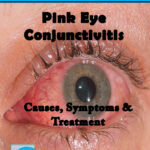Viruses can cause cancer. Human immunity can be made strong only through optimal immune nutrition, and reducing entry of pathogenic microbes like viruses & bacteria, and infectious proteins like prion proteins. Hence, staying safe through precautionary methods is good sense!


The parasite virus is also called ‘visha’ in Sanskrit. This is due to the toxic nature of many viruses, which have a very simple structure: the outer coat of protein and lipids that encloses either the RNA or DNA genetic material. RNA stands for ribose nucleic acid and viruses that contain this single stranded RNA are called RNA viruses (eg. SARS-CoV-2 that causes Covid-19). DNA stands for deoxy ribose nucleic acid and viruses that contain the double stranded DNA are called DNA viruses (eg. adenovirus that causes common cold).
Viruses are obligate (compulsory) intracellular (they live inside host cell) parasites. They enter host cell, hijack the nucleus, and control cellular machinery and makes copies of itself using the cell as a resource. These copies of the virus then go on to infect other host cells – the new viruses enter new host cells and again makes viral copies. This vicious cycle of entering the host cell, viral replication and entering other host cells – causes ever increasing viral load in the host body and thus severity of viral infection goes on increasing. Either the natural immunity of the host body quells the viral infection or the host body succumbs to the viral infection. Hence, the toxic nature of pathogenic or disease causing minute viruses can be distressing and at times fatal.
Cancer is a frightening word
Cancer is a frightening word; this is a disease of the body in which body’s cells become enemy of the body. When normal human cells turn abnormal due to genetic reasons or influence of certain chemicals or radiation – these cells start to multiply in an unrestricted way. In cancer, there is uncontrollable growth of abnormal cells and this often leads to swelling, pain and bleeding as common signs and symptoms of cancer. Carcinogens are established compounds or entities that are known to be cancer causing, they stimulate conversion of normal cells to abnormal cells and cancer is the result, as such, cancer can occur anywhere in the body. Cancer can occur in the liquid component of the body (blood cancer) or in non-liquid part of the body too, in various organs.
Cancer can occur outside on the skin, lips and nose or in any of the internal organs like liver, pancreas, bone marrow and brain. Well known carcinogens that cause cancer include tobacco smoke, benzene, radon, asbestos, various workplace chemicals, radiation, biological agents like viruses and even medications. Getting afflicted with cancer implies severe loss in quality of life, many a time – death and a severe drain in finances. The cancer patient’s social life and family life, plus the quality of life of caregivers’ in the family and friend circle is full of stress, anxiety, trauma and disruptions.
Viruses that cause cancer
If cancer is a dreaded disease causing much pain, anguish, trauma and death, just imagine how much suffering can be caused by a cancer causing virus, which is a toxic parasite. Hence, from time immemorial holistic systems of healing like Ayurveda have emphasized detoxification to boost immunity or self-defense function. If toxic overload is there in the body, metabolism and immunity are impaired and diseases like cancer occur in the individual.
Viruses that cause cancer are called oncoviruses. Many of these oncoviruses are retrovirus, which means they can insert their RNA into the DNA of the host cell. This RNA insertion into the host cell genetic makeup causes formation of cancerous tumours. Human tumour viruses are said to cause 12% to 20% of the global cancers. These tumour viruses are known to cause persistent infection; they infect the host cell but do not kill them and cancer occurs years after infection. The oncoviruses are: Epstein – Barr Virus, Papillomaviruses 16 and 18, Herpes virus, Hepatitis B virus, Hepatitis C virus, HTLV-1, Merkel Cell Polyomavirus, and HIV.
An example of the oncovirus is the HTLV-1, which stands for human T-lymphotropic virus 1 and as the name indicates, this virus is having a strong affinity towards the T lymphocyte (a type of white blood cell). HTLV-1 is a retro virus – this is a type of virus that inserts its RNA into the DNA of the host cell. After this the HTLV-1 virus changes the normal pattern of DNA folding in the host cell. The viral RNA acts on many sites of the human genome to cause this disruption of gene function by inducing abnormal human DNA folding inside the host cell. This makes the T lymphocytes overactive immune cells and turns them into cancerous. This rare type of cancer caused by HTLV-1 is called Adult T-cell leukemia (ATL).
As seen above oncoviruses cause persistent infection and the cancer may develop after several decades of the viral infection as in the case of ATL (due to HTLV-1). There are an estimated 50 lakh to 1 crore carriers of this HTLV-1 virus in the world, in Japan alone it is estimated there are 10 lakh carriers. The chronic activation of T lymphocytes by HTLV-1 is a phenomenon of research study and holds the key to anticancer drug development.
Post Covid-19 scientific approach.
The other interesting facet of ongoing research is the carcinogenic potential of SARS-CoV-2 virus that causes Covid-19 pneumonia and multiorgan damage. Even non retroviruses like coronavirus SARS-CoV-2 are known to cause persistent infection. There are certain viral structural reasons for investigating carcinogenic potential of SARS-CoV-2. Thus, besides long Covid complications – other long term complications are also being investigated. Hence, good immune nutrition, hygiene practices and scientific detoxification practices to reduce oxidative stress – due to overproduction of toxic free radicals – and decreasing other toxin overload, is a post Covid-19 scientific approach.
Oncoviruses gain entry and infect humans through infected bodily fluids like semen, blood, and breast milk. Thus, unprotected sex, injecting drug use, tissue transplantation, and blood or blood product transfusion can be a source of HTLV-1 transmission (and other oncoviruses). Human immunity can be made strong only through optimal immune nutrition, and reducing entry of pathogenic microbes like viruses & bacteria, and infectious proteins like prion proteins. Hence, staying safe through precautionary methods is good sense!


Sunil S Chiplunkar
M Pharm (Pharmacology) MBA (Marketing) PGDHRM (PhD)
VP – Business Development
Group Pharmaceuticals, Bangalore
E mail: 1969sunilchiplunkar@gmail.com
Mob: 63645 78669
Further reading:
- https://www.who.int/news-room/fact-sheets/detail/human-t-lymphotropic-virus-type-1
- https://www.imperial.ac.uk/news/232637/how-virus-transforms-immune-cells-into/
- Further reading: https://www.ncbi.nlm.nih.gov/pmc/articles/PMC2267909/
- https://www.mdanderson.org/publications/focused-on-health/7-viruses-that-cause-cancer.h17-1592202.html
- https://www.imperial.ac.uk/news/186970/cancer-causing-virus-htlv-1-changes-dna-loops/
- https://www.sciencedirect.com/science/article/pii/S0306987720311531











